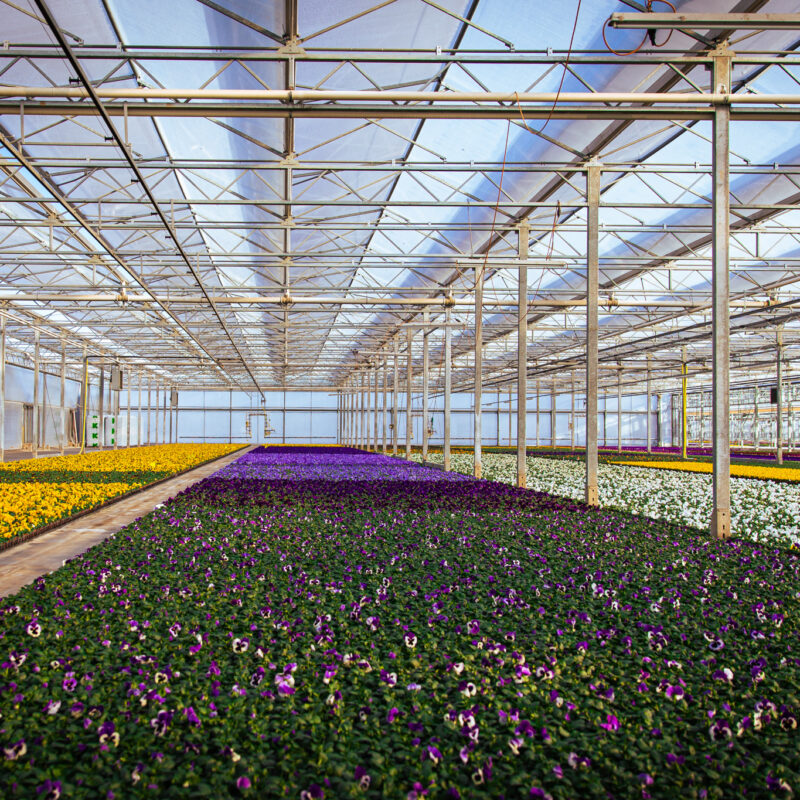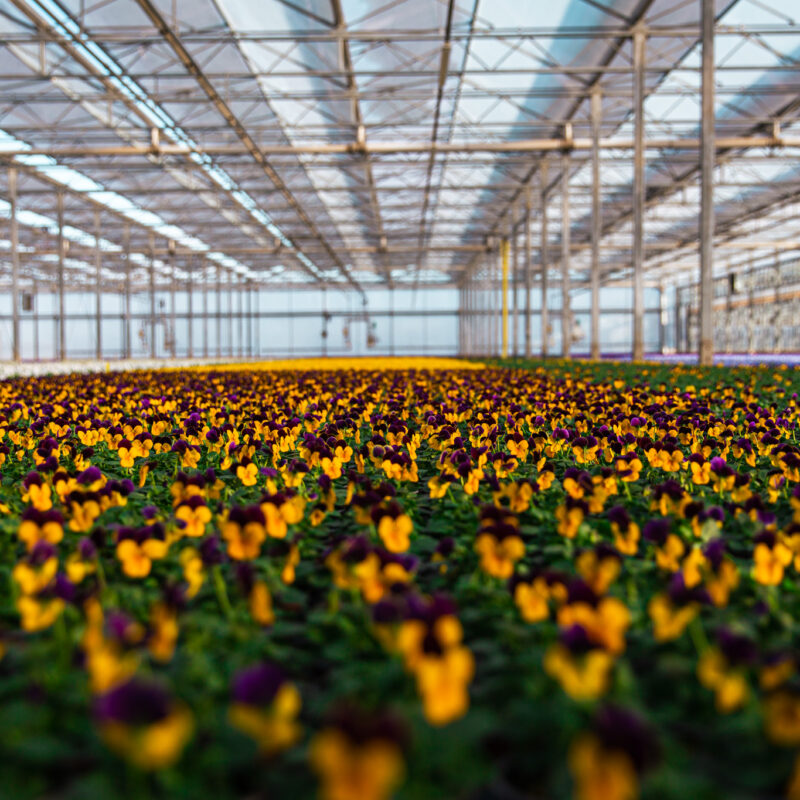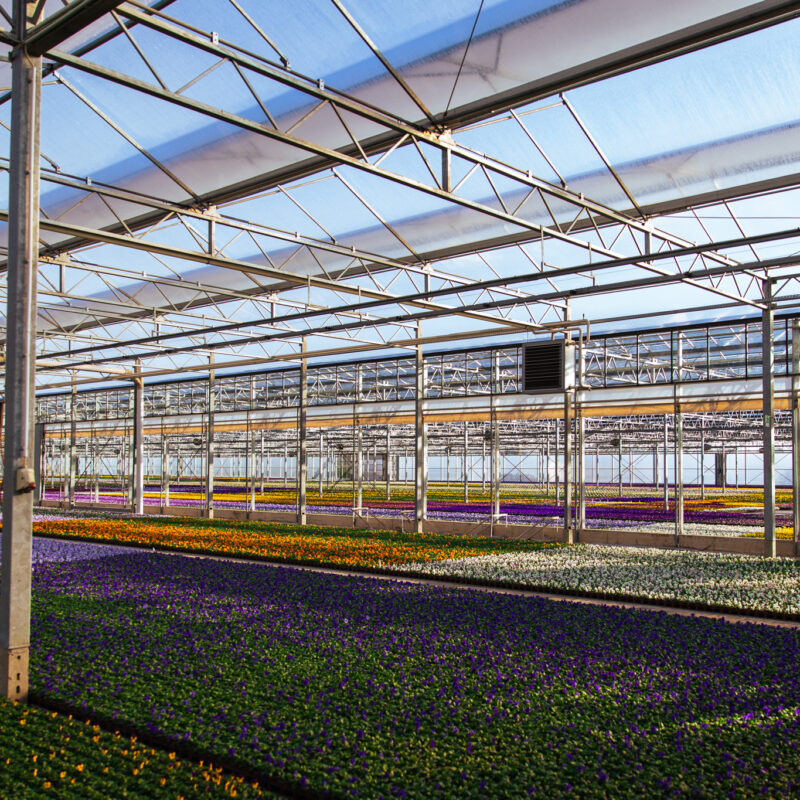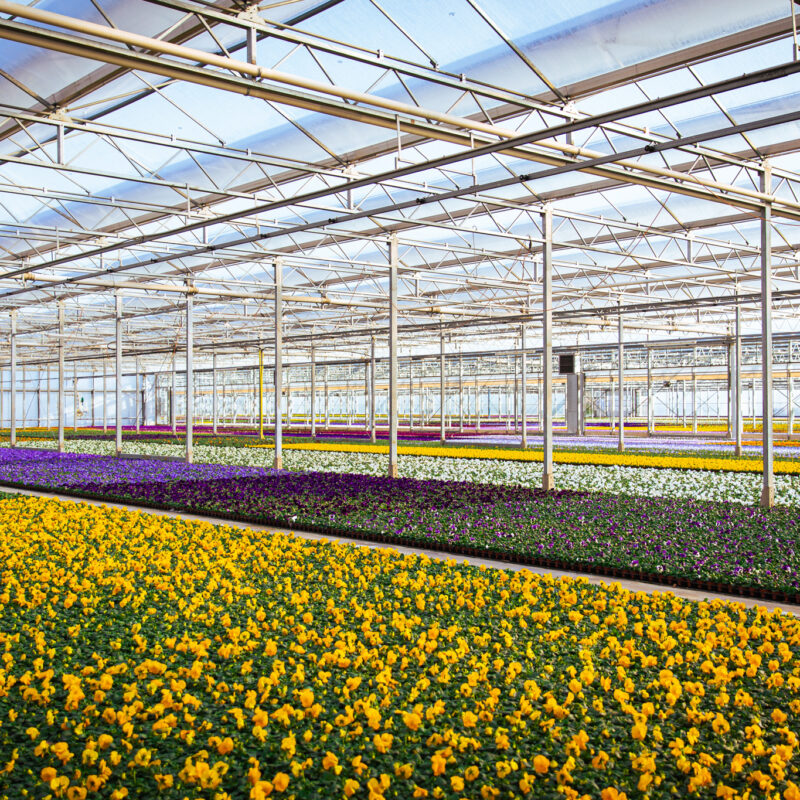Gärtnerei Wolter produces excellent quality for specialized shops, garden centers and cemetery nurseries. Most of the production is made to order in advance. Deliveries are mainly made to the Rhine-Main region and extend to an area of up to 200 km around the nursery.
Spotlight on our members: Gärtnerei Wolter
Babenhausen, Germany
The most important facts at a glance.
Our members are more than just facts and figures for us.
The Wolter nursery was founded in 1968 as a cut flower business with 1200m² of greenhouse space. Since then, the company has developed into a dedicated pot plant business with 23,300 m² of greenhouse space and a total area of 6.9 hectares. Today, it produces large quantities of violas and a wide range of bedding plants.
Q and A
Our members’ concerns are our concerns.
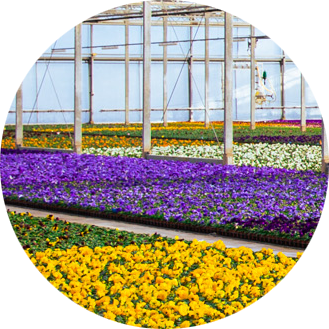
Ute Gorges
Gärtnerei Wolter
1. What are your responsibilities and tasks and how long have you been doing this job?
After completing horticultural training and working on our parents’ farm, we took over the business in 1999. Over the years, the company has grown and an increasingly strict division of labor has developed. Jörg Wolter is responsible for production and technology. Ute Gorges takes care of purchasing and sales and everything else that needs to be done in the office.
2. In your opinion, what makes your company special?
Our aim is to produce good quality products for specialist retailers and fellow gardeners. In our crop management, our priority is to grow stable, compact and sufficiently nourished plants so that the end customer can enjoy them for a long time and will be happy to buy from the same nursery again. We produce most of the violas in pots to order in advance, but also in multi-pot trays for cemetery gardeners, for the sake of better handling and the environment. We also grow bedding plants of special varieties or in colorful pots at the customer’s request and are proud of having worked with many loyal customers for decades. We hope and trust that our customers regard us as a reliable partner.
3. What challenges are you currently faced with in your daily work?
Currently, many things are undergoing radical change and society is facing major challenges. In our business, this has had a particularly noticeable impact on the way we are having to adapt to climate change in our production as well as the increase in requirements for environmental protection and sustainability. Rising costs in every area of operations present us with the task of finding the right balance between making a profit and retaining customers. Excessive bureaucracy takes up a lot of manpower that could be put to better use elsewhere.
4. Have you ever had a damage event in your company and if so, what kind of damage was it?
In the summer of 1982 we had a large amount of damage caused by hail. The azalea, erica, calluna and camellia open-field plants were completely destroyed and much of the glass surfaces were broken. Without the hail insurance, the business would not have survived the losses. The damage was promptly, comprehensively and professionally documented by the assessors and we were given rapid assistance. Fellow gardeners from the surrounding area also came to help us clear away the broken glass.
Apart from that, we had a few minor claims, which were always processed and compensated promptly and without any problems.
5. How have you experienced the support provided by Gartenbau-Versicherung so far?
Gartenbau-Versicherung is structured and organized as a mutual insurance company. This spirit is tangible and is practiced every day. It’s a reassuring feeling to have insurance that is so vital to your existence in such high quality by your side. We are aware that Gartenbau-Versicherung is constantly adapting and evolving. We, too, see the expansion from the original German insurance company to a pan-European insurance company as necessary in order to adapt to the increased risks caused by climate change.
6. Is there anything you would like to see Gartenbau-Versicherung do in the future?
We hope that Gartenbau-Versicherung will continue to place gardeners at the center of its focus and remain forward-looking, maintain a good balance between ensuring adequate insurance coverage and keeping costs down, and that it will recognize emerging risks and incorporate them in its policies.
